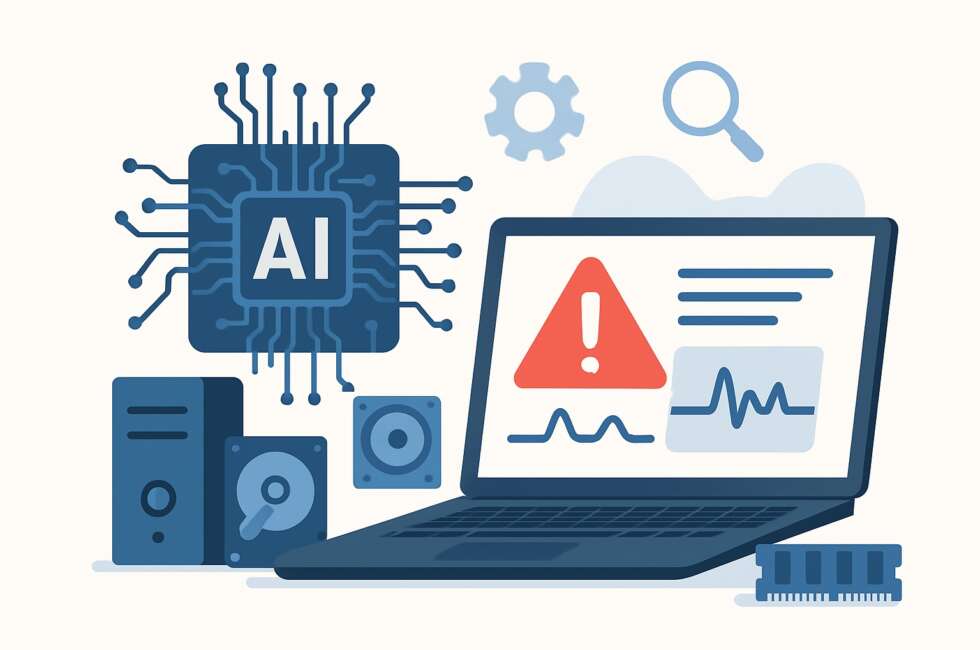🚨 Top 7 Powerful AI Tools for Hardware Diagnostics That Instantly Detect Issues
Discover the top 7 AI tools for hardware diagnostics that instantly detect system issues. Keep your systems running smoothly with these powerful AI solutions.
Table of Contents
🚀 Introduction: The Rise of AI in Hardware Diagnostics {#introduction}
AI Tools for Hardware Diagnostics are transforming the way businesses maintain and protect their systems. With real-time monitoring, predictive maintenance, and automated alerts, these tools ensure fewer downtimes and more efficient tech performance.
As a business owner, staying ahead of potential hardware failures can save you thousands of dollars and preserve productivity. Today, we’re diving into the top AI tools for hardware diagnostics that offer instant detection—so your operations stay smooth, fast, and uninterrupted.
💡 Why Use AI Tools for Hardware Diagnostics? {#why-use-ai}
AI-powered diagnostic tools offer a range of benefits that traditional methods simply can’t match:
-
Real-time issue detection
-
Predictive alerts before failures happen
-
Automated diagnostics
-
Reduced IT downtime
-
Improved device health
According to Gartner, over 80% of enterprises will use AI in IT operations by 2026. This makes it vital for businesses to integrate these tools today—not tomorrow.
🧠 Top 7 AI Tools for Hardware Diagnostics {#top-tools}
Here’s a breakdown of the top-performing AI tools for hardware diagnostics that offer unmatched speed, accuracy, and automation.
1. IBM Watson AIOps {#ibm}
IBM’s Watson AIOps platform uses machine learning to detect anomalies across devices in real-time. It learns from your environment and spots hardware faults before they impact users.
-
Best for: Large enterprises
-
Key features: Root cause analysis, anomaly detection, automatic ticket creation
2. NVIDIA Clara Guardian {#nvidia}
Built for edge computing and IoT, Clara Guardian helps hospitals and facilities identify hardware or sensor issues using AI.
-
Best for: Healthcare hardware monitoring
-
Key features: Edge AI, sensor monitoring, predictive diagnostics
3. HP TechPulse {#hp}
HP TechPulse is a cloud-based analytics platform that provides rich insights into hardware health and lifecycle.
-
Best for: Small to mid-sized businesses
-
Key features: Predictive analytics, automated alerts, device status dashboards
4. Lenovo Device Intelligence {#lenovo}
Lenovo Device Intelligence uses AI to identify bottlenecks, system errors, and degrading performance.
-
Best for: Lenovo hardware ecosystems
-
Key features: Predictive failure alerts, fix recommendations, usage analytics
5. Atera {#atera}
Atera combines Remote Monitoring & Management (RMM) with AI diagnostics, perfect for MSPs and IT teams.
-
Best for: IT support teams
-
Key features: Remote diagnostics, hardware monitoring, predictive alerts
6. Pulseway {#pulseway}
Pulseway allows real-time hardware tracking from mobile devices, powered by intelligent automation.
-
Best for: Remote IT professionals
-
Key features: Mobile-first monitoring, instant hardware notifications, auto-resolution workflows
7. SysTrack by Lakeside Software {#systrack}
SysTrack uses AI to collect over 10,000 data points per device every 15 seconds—pinpointing hardware issues fast.
-
Best for: Enterprise diagnostics
-
Key features: Deep telemetry, predictive hardware failure, real-time analytics
🔍 How AI Enhances Hardware Issue Detection {#enhancements}
Traditional monitoring can miss early warning signs, but AI tools for hardware diagnostics:
-
Learn from historical data
-
Adapt to your systems’ behavior
-
Send real-time alerts
-
Offer automated resolutions
Using AI ensures proactive maintenance instead of reactive firefighting, keeping your infrastructure healthy and reducing costly outages.
🛠️ Choosing the Right AI Diagnostic Tool for Your Business {#choosing}
Here are key questions to help you choose the best AI tool for hardware diagnostics:
-
What’s your company size? (Scalability is crucial)
-
Are your devices remote, on-site, or hybrid?
-
Do you need integrations with existing platforms?
-
Do you require mobile monitoring?
-
What’s your budget?
Also, check if the platform offers support and free trials. For example, Pulseway’s free trial is great for testing capabilities before committing.
For internal insight, check out our blog on streamlining IT operations to align your needs with the right solution.
🔮 Future Trends in AI Hardware Monitoring {#future}
AI in diagnostics will only become more advanced. Expect:
-
Self-healing systems that fix themselves
-
Deeper integration with cybersecurity
-
Voice-activated diagnostics
-
AI agents that work across hardware and software layers
These trends aim to reduce human intervention, cut down costs, and ensure consistent uptime.
✅ Final Thoughts {#conclusion}
Integrating AI tools for hardware diagnostics is no longer optional—it’s essential. Whether you’re managing 10 devices or 10,000, AI helps prevent issues before they cause damage, saving your business time and money.
Start exploring your options with the tools we’ve listed above. If you’re looking for guidance tailored to your business needs, contact our support team and we’ll help you choose the best solution.
Internal Links:

